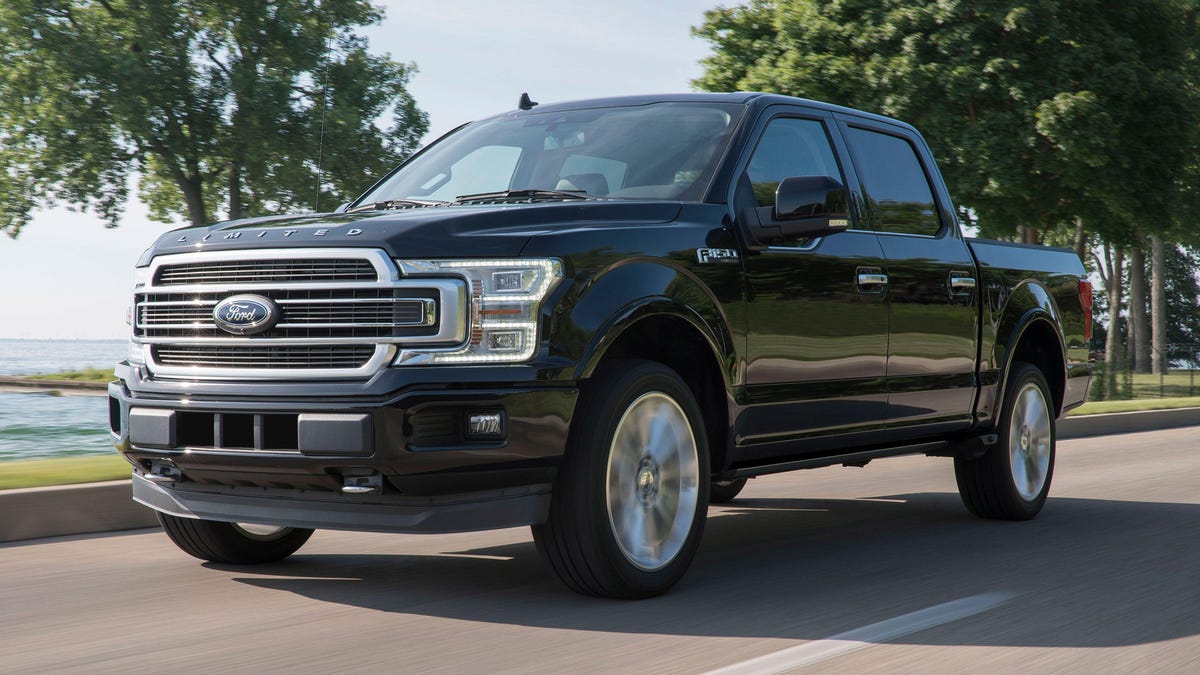Ford's aluminum-bodied F-150 is cheaper to repair than steel, report says
The Blue Oval's big aluminum gamble paid off in the form of cheaper repairs and no insurance cost increases for owners.
When Ford announced that it would be making the body of its F-150 pickups out of aluminum, it got people all in a tizzy. See, historically, aluminum bodies were the province of exotic and sports cars. They were lightweight, yes, but fragile. Not something you'd want in a truck.
Chevrolet took that idea and ran with it in a number of its ad campaigns, belittling Ford for using a fragile and expensive-to-fix material on a truck that's meant to see real worksites and abuse. Well, according to a report published Monday by Automotive News, the aluminum F-150 isn't that expensive to repair at all.
Or, rather, it's not that expensive anymore. Back in 2014, Ford's grand experiment forced dealers to decide if they would invest in the training and equipment to repair the bodies of the new alu-bodied F-150. It was an expensive proposition at the time -- with equipment costing dealers between $30,000 and $50,000 -- but many of the changes in the way the truck bodies were designed and built meant that once technicians were trained and their shops adequately equipped, the repair process took significantly less time than it would have with a previous steel body panel.
It's not just time savings that have brought down the cost of repairs for the F-150; parts prices are lower too, in many cases. Hoods and front bumpers are among those parts to see double-digit percentage price decreases over previous models. Some parts, like bedsides, are more expensive, but likely less frequently needed. Ford also worked with suppliers of things like sealants, chemicals and other consumables necessary for repairs on the new bodies to keep costs in check.
Another criticism from Ford's competitors and a concern for buyers was that the new trucks would cost more to insure, but Ford explicitly set out to educate insurance companies on the vehicle's modular architecture and subsequent lower repair costs. This means that that the aluminum F-150 is no more expensive to insure than the previous steel-bodied model, according to a spokesperson for State Farm.
"We've said all along that high-strength, military-grade aluminum alloy continues to be the best performing material to meet our Built Ford Tough expectations and customer needs, and we're glad the Highway Loss Data Institute report confirms aluminum F-150 is less costly to repair than steel-bodied competitors," said Dawn McKenzie, Ford's truck communications manager, in response to Roadshow. "The team set a goal at the very beginning to make the F-150 to be as easy and affordable to repair as possible, and they considered every aspect of what needed to be done, from vehicle design, dealer training, working with the insurance companies, and the price of replacement parts to make it happen. In the end, it's our customers that win."
The truck business isn't generally thought of as being highly technologically competitive in the same way that other market segments are, but Ford's massive leap of faith with its move to alloy-bodied trucks was, in many ways, a quantum leap forward and one that paid off. The new bodies saved around 700 pounds of weight and those kinds of savings are increasingly becoming hard to come by, as are the benefits to fuel economy, performance and handling that they beget.


